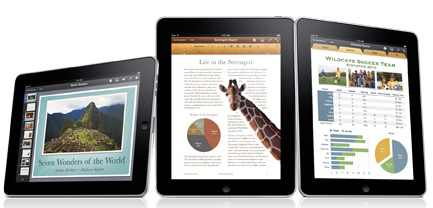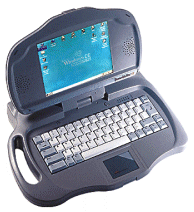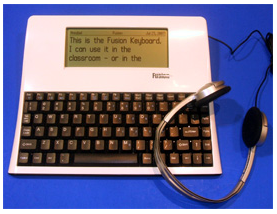Word processing is the creation of documents using a word processor.
A word processor (formally known as a document preparation system ) is an application used for the production (includes composition, editing, formatting, and possibly printing) of any sort of printable text. More currently, a word processor refers to a stand-alone "machine" combining keyboarded text and printing functions.
) is an application used for the production (includes composition, editing, formatting, and possibly printing) of any sort of printable text. More currently, a word processor refers to a stand-alone "machine" combining keyboarded text and printing functions.
Microsoft Office is the most widely used word processing software. Microsoft estimates that over 500,000,000 people use the Microsoft Office Suite, which includes Word. Many other word processing products exist, some in the mainstream market place and some in unique, specialized contexts with specially modified or adapted writers.
In the school setting, all students are being expected to learn keyboarding skills and develop written language skill. Students who struggle to compose text, perhaps from difficulty with handwriting, or those with organizational problems preventing them from structuring their thoughts and ideas or those with cognitive issues making spelling and grammar nearly impossible, often benefit from an accommodation on their IEP allowing them to word process instructional activities and assessment.
The creation of a portable word processing unit, now allows many students to use word processing tools in their classrooms.
These tools and many more can be explored and researched on the web, by simply searching under word processor.
In addition to hardware, there are many different word processing software titles. Many are the newer integrated literacy suites or production software titles that come with integrated functions allowing the user to switch smoothly and seamlessly between reading and writing, with all the adapted tools available in all applications (for example: word prediction is active in all components of the SOLO writing package, including, Write OutLoud, Read OutLoud and Draft Builder).
A word processor (formally known as a document preparation system
 ) is an application used for the production (includes composition, editing, formatting, and possibly printing) of any sort of printable text. More currently, a word processor refers to a stand-alone "machine" combining keyboarded text and printing functions.
) is an application used for the production (includes composition, editing, formatting, and possibly printing) of any sort of printable text. More currently, a word processor refers to a stand-alone "machine" combining keyboarded text and printing functions.Microsoft Office is the most widely used word processing software. Microsoft estimates that over 500,000,000 people use the Microsoft Office Suite, which includes Word. Many other word processing products exist, some in the mainstream market place and some in unique, specialized contexts with specially modified or adapted writers.
In the school setting, all students are being expected to learn keyboarding skills and develop written language skill. Students who struggle to compose text, perhaps from difficulty with handwriting, or those with organizational problems preventing them from structuring their thoughts and ideas or those with cognitive issues making spelling and grammar nearly impossible, often benefit from an accommodation on their IEP allowing them to word process instructional activities and assessment.
The creation of a portable word processing unit, now allows many students to use word processing tools in their classrooms.
The Netbook a mobile, mini-laptop allows word processing and internet access. It's size, function and price make it a good tool for many. The Apple iPad, also mobile, offers a desktop productivity suite, with a wealth of writing tools available. Individual apps allow customization and production. The DreamWriter (by ) and Neo (by AlphaSmart) are other mobile units,often selected by schools because of there durable case, has printing capabilities, interface capabilities with a computer and the ability to add writing tools such as word prediction. The Fusion (by ) is a talking word processor, with both text-to-speech and word prediction.



 Netbook iPad DreamWriter Fusion
Netbook iPad DreamWriter Fusion



 Netbook iPad DreamWriter Fusion
Netbook iPad DreamWriter FusionThese tools and many more can be explored and researched on the web, by simply searching under word processor.
In addition to hardware, there are many different word processing software titles. Many are the newer integrated literacy suites or production software titles that come with integrated functions allowing the user to switch smoothly and seamlessly between reading and writing, with all the adapted tools available in all applications (for example: word prediction is active in all components of the SOLO writing package, including, Write OutLoud, Read OutLoud and Draft Builder).
Last modified: Thursday, September 23, 2010, 1:20 PM